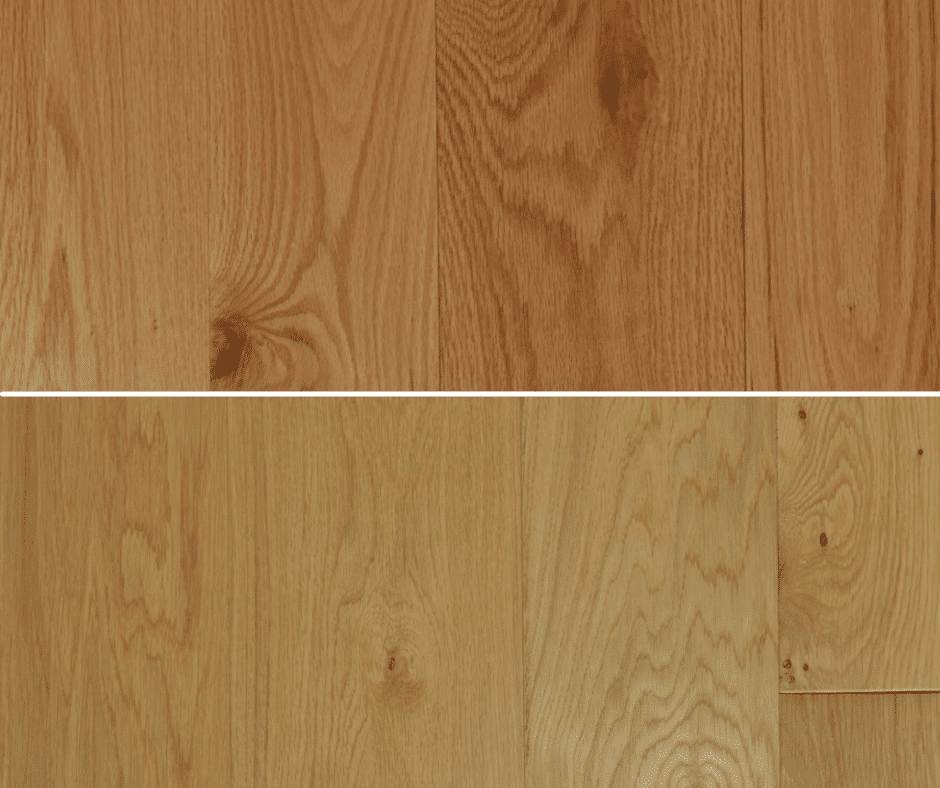Oak hardwood flooring is a classic choice in almost every type of home. It looks great, it’s durable and if it gets damaged it can be refinished. It’s a popular choice in North American homes because of its ubiquity and relatively low carbon footprint when compared to exotic hardwoods. However, choosing a specific type of oak can get a little more confusing. Red oak and white oak are the two most popular types, but what’s the difference? In this article, we’ll compare red oak vs white oak flooring.
Colour
Their names kind of give it away, but they can be misleading. Red oak isn’t full-on red, but it does have a slight pink, reddish undertone. And counterintuitively, white oak is actually darker than red oak. White oak has browner undertones than red oak. That said, if you’re going to stain your floors, it might make the two almost indistinguishable. You’re only really going to see the difference in colour with a clear coating or a very light stain.
Grain
The grain pattern is the best way to distinguish red oak from white oak – especially if there’s a stain involved. Red oak has a looser, more varied grain whereas white oak has a tighter, more uniform grain. Along with the natural colour of the wood, this makes the grain of red oak stand out more prominently than with white oak.
Hardness
White oak is slightly harder than red oak, but they’re pretty close on the Janka Hardness rating scale. White oak measures 1360 while red oak comes in at 1290. If you consider that one of the softest woods, balsa, rates a score of 100 and the hardest woods reach up to and over 5000, white and red oak are pretty comparable.
Cost
Generally speaking, white oak will be more expensive than red oak. If you’re already using a darker stain which eliminates any visual differences between the two, they will be very similar in function with the cost being the biggest difference. If your budget is giving you concern, you can have a perfectly good hardwood floor while bringing down your costs by choosing red oak flooring.

